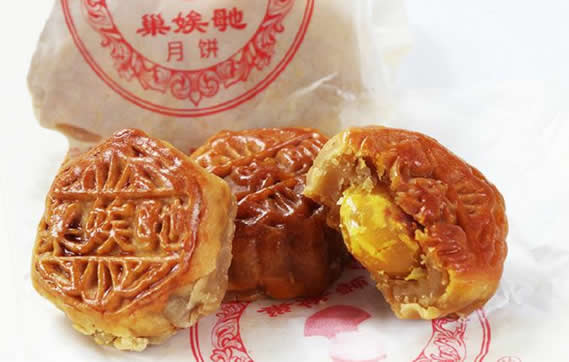求一篇关于内蒙美食的英文介绍,急急急
The nomads of Mongolia sustain their lives directly from the products of domesticated animals such as cattle, horses, camels, yaks, sheep, and goats, and sometimes game. Meat is either cooked, used as an ingredient for soups or dumplings (buuz/khuushuur/bansh), or dried for winter (borts).The Mongolian diet includes a large proportion of animal fat which is necessary for the Mongols to withstand the cold winters and their hard work. Winter temperatures as low as -40 °C and outdoor work require sufficient energy reserves. Milk and cream are used to make a variety of beverages, as well as cheese and similar products.
The most common rural dish is cooked mutton, often without any other ingredients. In the city, every other locale displays a sign saying buuz. Those are dumplings filled with meat, which are cooked in steam. Other types of dumplings are boiled in water (Bansh), or deep fried in mutton fat (Khuushuur). Other dishes combine the meat with rice or fresh noodles into various stews (tsuivan, budaatai huurga) or noodle soups (guriltai shol).
The most surprising cooking method is only used on special occasions. In this case, the meat (often together with vegetables) gets cooked with the help of stones, which have been preheated in a fire. This either happens with chunks of mutton in a sealed milk can (Khorkhog), or within the abdominal cavity of a deboned goat or marmot (Boodog).
Milk is boiled to separate the cream. The remaining skimmed milk is processed into cheese (byaslag), dried curds (aaruul), yoghurt, kefir, as well as a light milk liquor (Shimiin Arkhi). The most prominent national beverage is airag, fermented mare's milk.[2] A popular cereal is barley, which is fried and malted. The resulting flour (arvain guril) is eaten as a porridge in milk fat and sugar or drunk mixed in milk tea. The everyday beverage is salted milk tea (Süütei Tsai), which may turn into a robust soup by adding rice, meat, or Bansh. As a consequence of the Russian influence during socialism, vodka also has gained some popularity[2] with a surprising number of local brands (usually grain spirits).
Horse meat is eaten in Mongolia and can be found in grocery stores.
For dessert, Mongolians have boortsog, a type of Mongolian biscuit or cookie.
这些资料来自维基百科,希望对你有帮助
The vast grasslands have always been symbolic of Inner Mongolia. Mongolian art often depicts the grassland in an uplifting fashion, emphasizing on the nomadic traditions of the Mongol people. The Mongols of Inner Mongolia practice many traditional forms of art. Inner Mongolian specialty cuisine, largely derived from the tradition of ethnic Mongols, consists of dairy-related products and hand-held lamb (手扒肉). In recent years franchises based on Hot pot had sprung up from Inner Mongolia, the most famous of which is Xiaofeiyang (小肥羊). Inner Mongolia is also known commercially for the brand names Mengniu and Yili, both of which began with the production of dairy products and ice cream.
湖南特产推荐
- 大喜哥的后续报道2024-11-23
- 湖南常德有哪些特产2024-11-23
- 写出十条有关湖南省的地势、气候、河流2024-11-23
- 长沙有什么好吃的店可以推荐呢?不要太贵的哦2024-11-23
- 为什么北京正名庐成人改名不需要生辰八字2024-11-23
- 2022年山茶油价钱几多钱一斤?2024-11-23
- 天津小产权房转大产权房吗?2024-11-23
- 挑红四里的红太阳是啥意思啊2024-11-23
- 湖南永州有什么特产2024-11-23
- 2016江苏省专转本一共有多少人报名2024-11-23
- 赣浏高速建设.招标时间2024-11-23
- 宁远肉馅豆腐是哪里的特产2024-11-23
姓 名:
联系电话:
留言备注:
快捷留言
- 来自阳先生对湖南湘潭特产发出留言意向
- 来自欧女士对湖南株洲特产发出留言意向
- 来自李女士对湖南衡阳特产发出留言意向
- 来自王先生对湖南郴州特产发出留言意向
- 来自汪先生对湖南湘西特产发出留言意向
湖南特产推荐

- 写出十条有关湖南省的地势、气候、河流
- 价格:
- 热度:

- 查询详情

- 长沙有什么好吃的店可以推荐呢?不要太贵的哦
- 价格:
- 热度:

- 查询详情

- 为什么北京正名庐成人改名不需要生辰八字
- 价格:
- 热度:

- 查询详情

- 2022年山茶油价钱几多钱一斤?
- 价格:
- 热度:

- 查询详情

- 天津小产权房转大产权房吗?
- 价格:
- 热度:

- 查询详情

- 挑红四里的红太阳是啥意思啊
- 价格:
- 热度:

- 查询详情

- 价格:
- 热度:

- 查询详情>>

- 价格:
- 热度:

- 查询详情>>

- 价格:28~42元
- 热度:

- 查询详情>>

- 价格:
- 热度:

- 查询详情>>

- 价格:
- 热度:

- 查询详情>>

- 价格:
- 热度:

- 查询详情>>

- 价格:18.5~29.8元
- 热度:

- 查询详情>>

- 价格:
- 热度:

- 查询详情>>

- 价格:
- 热度:

- 查询详情>>

- 价格:
- 热度:

- 查询详情>>
- 特产动态
- 特产问答
- 特产百科
- 长春有什么特产的?告诉我。我要买些回去给我朋友。还有在哪能买到。
- 求一篇关于内蒙美食的英文介绍,急急急
- 湖南有什么吃的
- 湖南最有名的十大小吃
- 2011年杏核多少钱一斤
- 为什么子弟牌的薯片只有穷地方有像上海这样的大城市没有卖啊,那个味道真的好好吃啊
- 家庭聚餐的12道菜菜单
- 湖南特产有哪些土特产零食
- 湖南软件职业学院招生代码是多少?
- 湖南的特产是什么?
- 湖南最出名的特产是什么 湖南正宗的十大特产排行榜
- 长沙特产有什么可以带?
- 中国34个省10大热门地方特产盘点,340个土特产,出门知道买啥了
- 中国最好吃的十大米粉是什么
- 长沙有什么好吃的。在哪里?
- 西安特产有哪些土特产
- 济南中心医院做几路具体点
- 湖南长沙小吃排行榜前十名
- 贵州荣庄蝮蛇酒价格是多少
- 国内最有特色的烧烤培训学校是哪个?
- 明光市有哪些香烟
- 合作的特产是什么?
- 湖南特产有什么
- 下周我要去北戴河旅游,报的是旅行社的团。请问在哪里能买到比较好的北戴河的特产。谢谢!
- 南充特产有哪些可带走
- 东港市有什么好吃好玩的
- 内蒙古小吃特产有哪些
- 昆明特产排名前十名零食,云南旅游推荐零食品牌
- 湖南的特色食品有哪些?
- 合肥有什么特产?在哪里可以买到?要可以带走到外地的那种。
- 内蒙好吃的特产有哪些
- 谁用过oceanwell海灵的海藻萃取精华液,听说可以去痘印,有没有人分享下效果啊~?
- 海南特产推荐
- 四川白酒都有哪几种香型?
- 安徽特产有哪些?
- 现在在河内的,准备买一些买点越南特产回国,有意义方便携带的,要去哪里买买什么呢 ?
- 潮州水果有哪些
- 新加坡的主要特产都有什么?
- 贵州有哪些特色小吃 贵州特产
- 成都湿地公园(淮口巴德小镇)的位置



我要留言(留言后专人第一时间快速对接)
已有 1826 企业通过我们找到了合作项目